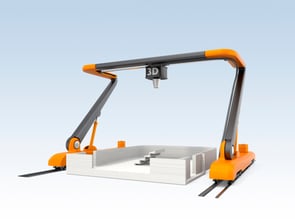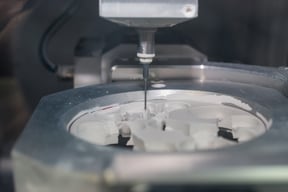Jay Leno — comedian, former late-night TV entertainer, and current host of Jay Leno’s Garage — recently made the news for driving the world’s first 3D printed automobile, the 2015 Local Motors Strati. More importantly, at least from the technological perspective, Leno has been an early adopter of 3D printing in his Big Dog Garage where he curates a collection of 300-plus cars and motorcycles. The Burbank, California facility features 3D engineering and production software as well as 3D scanners, inspection tools and printers. Leno and his team make some replacement parts on site, but they special order others from companies having more sophisticated 3D equipment.
 The first 3D printer was patented in 1984 by a French team with the technology slowly advancing behind the scenes of today’s general public. Also known as additive manufacturing, 3D printing is now available for commercial and consumer use in a spectrum of applications such as aerospace, apparel, architecture, art, automotive, building materials, culinary, construction, healthcare and robotics.
The first 3D printer was patented in 1984 by a French team with the technology slowly advancing behind the scenes of today’s general public. Also known as additive manufacturing, 3D printing is now available for commercial and consumer use in a spectrum of applications such as aerospace, apparel, architecture, art, automotive, building materials, culinary, construction, healthcare and robotics.
Additive manufacturing differs from subtractive fabrication systems such as those using lasers and CAD technology to cut machine parts from whole blocks of metal. The scrap waste can be re-melted and recycled.
Building Homes with 3D Printers
Shanghai company WinSun made a splash in 2014 when it announced the construction of 10 houses in one day, but many experts believe the technology was assimilated from Contour Crafting, the quick-drying concrete-layering process designed by Dr. Behrokh Khoshnevis of USC. Launched in 2006, his innovation may eventually lead to the construction of entire buildings or their components.
 Using 3D printing in construction may help solve a growing worldwide housing crisis. The World’s Advanced Saving Project (WASP) from Italy is developing a 40-foot-tall device to crank out dwellings made from local materials such as clay and sand in developing countries.
Using 3D printing in construction may help solve a growing worldwide housing crisis. The World’s Advanced Saving Project (WASP) from Italy is developing a 40-foot-tall device to crank out dwellings made from local materials such as clay and sand in developing countries.
Meanwhile, the 3D Print Canal House in Amsterdam is committed to using renewable materials for the creation of eco-friendly dwellings. Individual segments of the building are printed on-site, then assembled.
While the 3D printing of interior and exterior walls has been widely achieved, adding functionality such as electrical, plumbing, heating and air conditioning, millworks and painting continues to be a major hurdle because those systems need to be applied separately and after-the-fact, or simultaneously integrated with multiple 3D printers and robotics.
“The use of 3D printing in construction is mainly in the form of fused deposition modeling (FDM) — the technique of depositing materials layer by layer, just like making a cake, and letting them dry naturally,” stated SciDev.net. “Only concrete, mud or sand-based materials can be used for this process.” Nevertheless, the online publication believes future is bright for 3D printing in the building construction industry.
What will become of building materials dealers?
In the short term, building materials dealers will be able to peacefully coexist with 3D construction since a majority of items can’t be extruded cheaply. For example, it’s still less expensive to manufacture and ship PVC and ABS pipe using conventional means than to produce it with 3D printers.
Furthermore, consider that most building products are composed of multiple raw materials or engineered substances. How realistic or cost effective will it be to produce a circuit breaker containing steel, plastic, copper wiring and connectors, insulation and rivets with a 3D printer on site? Those items and millions more will need to be stocked and sold by dealers.
In the long term, suppliers will be able to sell the remaining items that can’t be produced on site (e.g. specialized components of electrical, plumbing, heating and air conditioning, millworks, etc) with 3D printers as well as the raw materials needed for the extruders. Hypothetically, the dealer of the future would no longer sell concrete blocks, but could sell bags or containers of the concrete or composite needed to be mixed on site and “ingested” by the 3D printers.
In addition to concrete, 3D printers are capable of extruding ABS, clay, imitation wood, faux rock and marble, sand, paper and glass. The building materials stockyard of tomorrow may not resemble what we are used to seeing today, but it will remain as an integral part of the construction supply chain for years to come.
You're delivering building materials en masse now, and every time your driver accepts a check you have concerns that it may be returned. With the advent of 3D printing on-demand building materials, on-site, you'll be delivering more and more materials. Instead of more and more worries about returned checks, consider a Check On Delivery service. With COD in place, checks are approved over the phone before the delivery is made, and because it is used in conjunction with guarantee, the revenue always falls to your bottom line. The order can also be adjusted in real-time and the revenue remains guaranteed. To learn more, click below.



